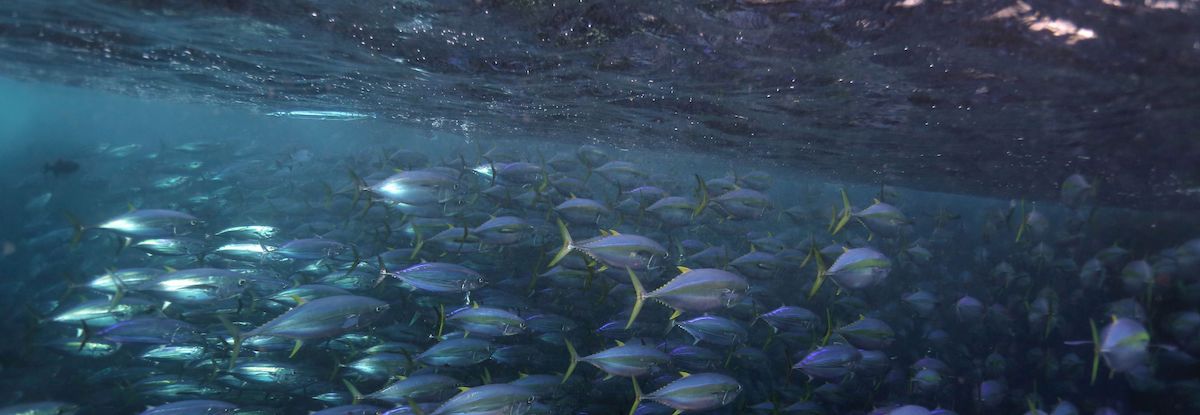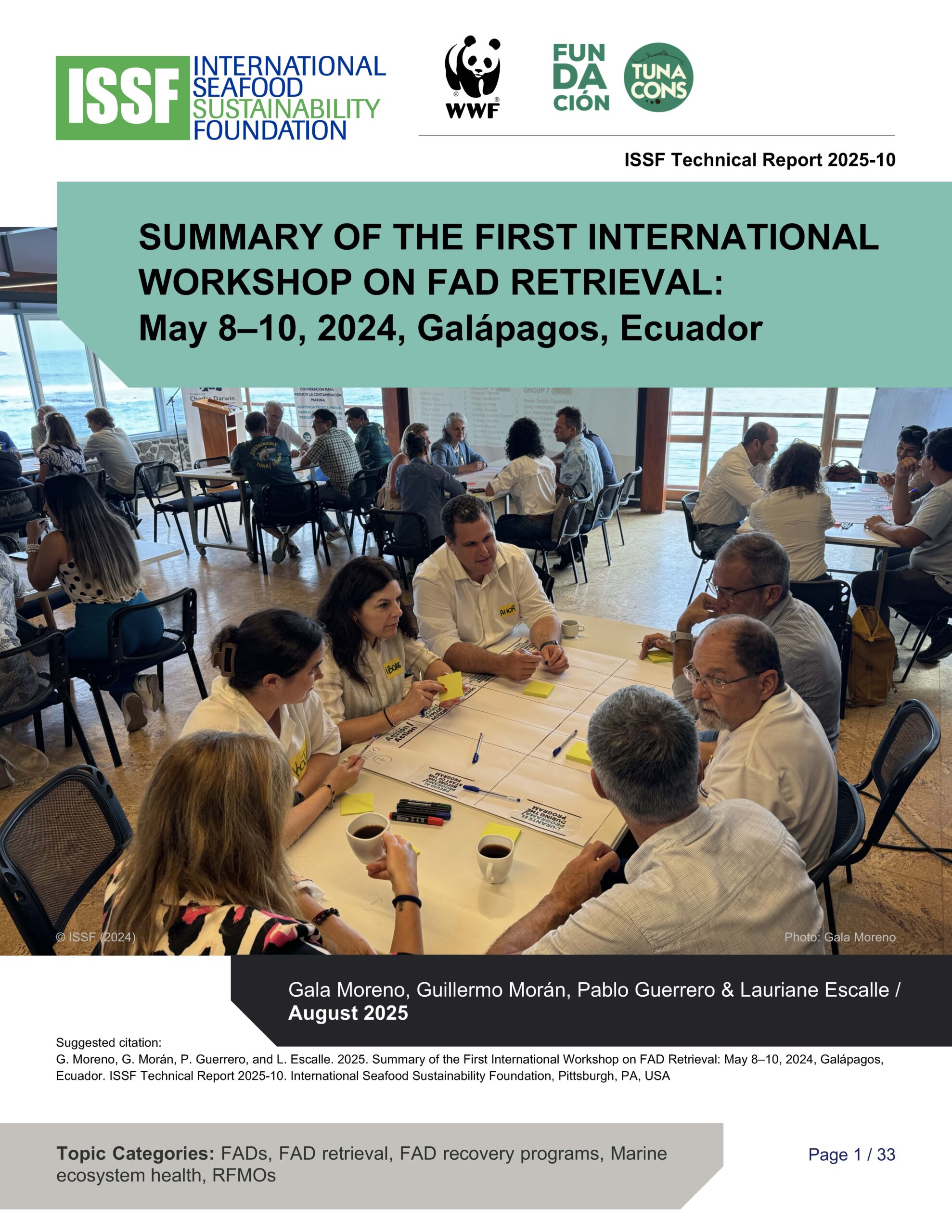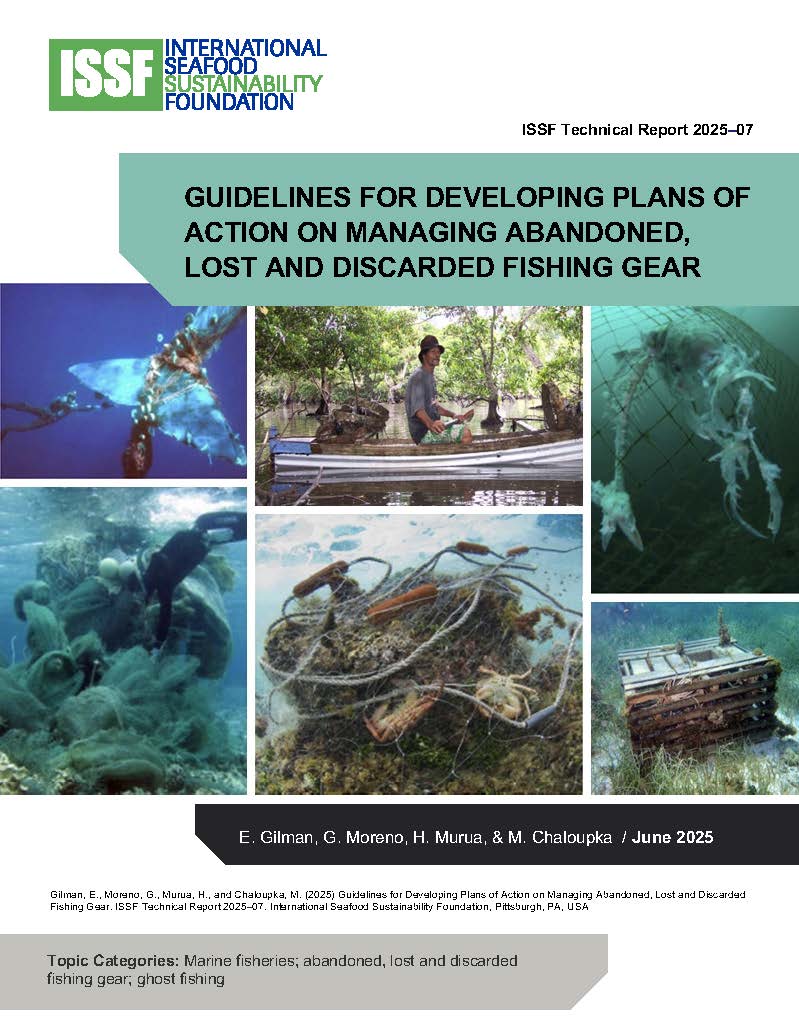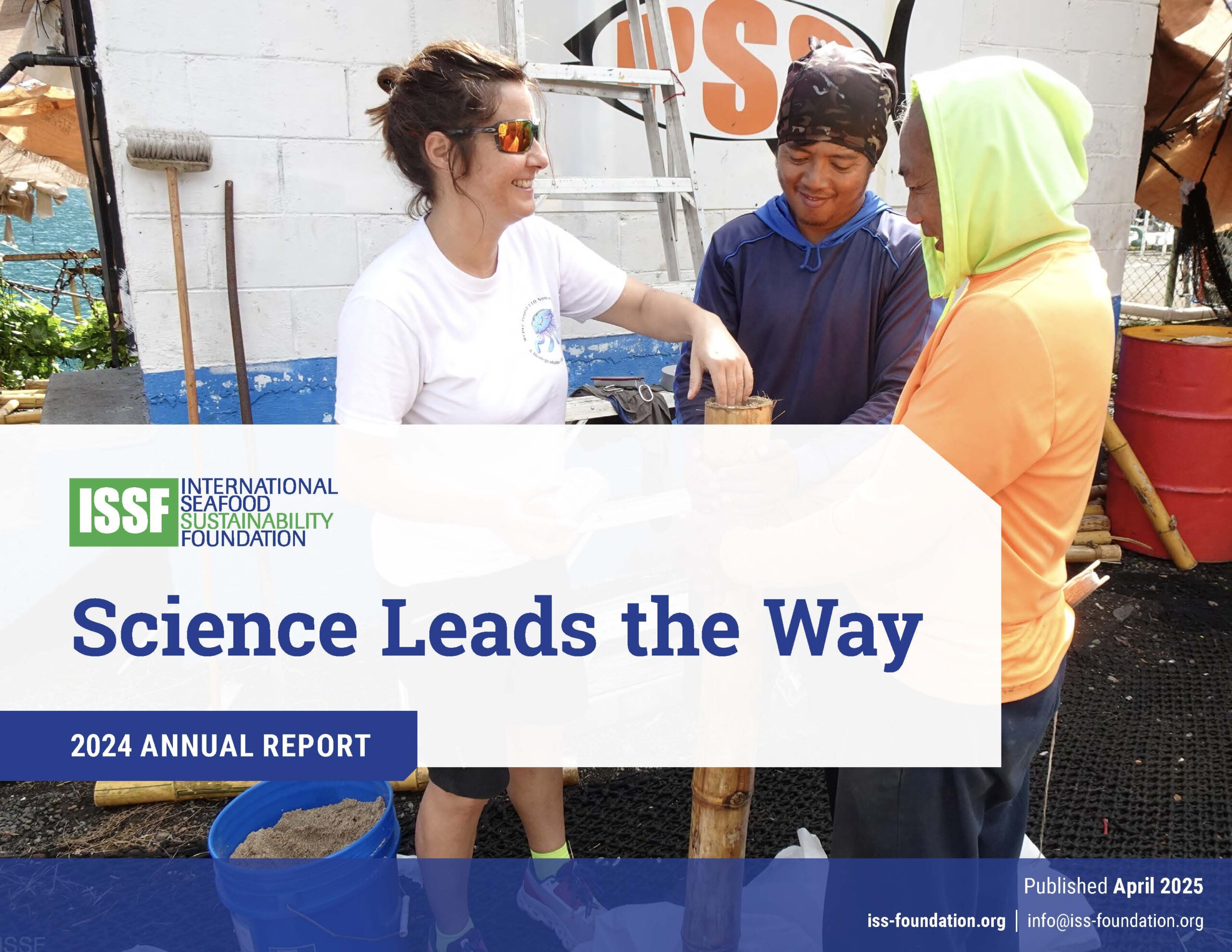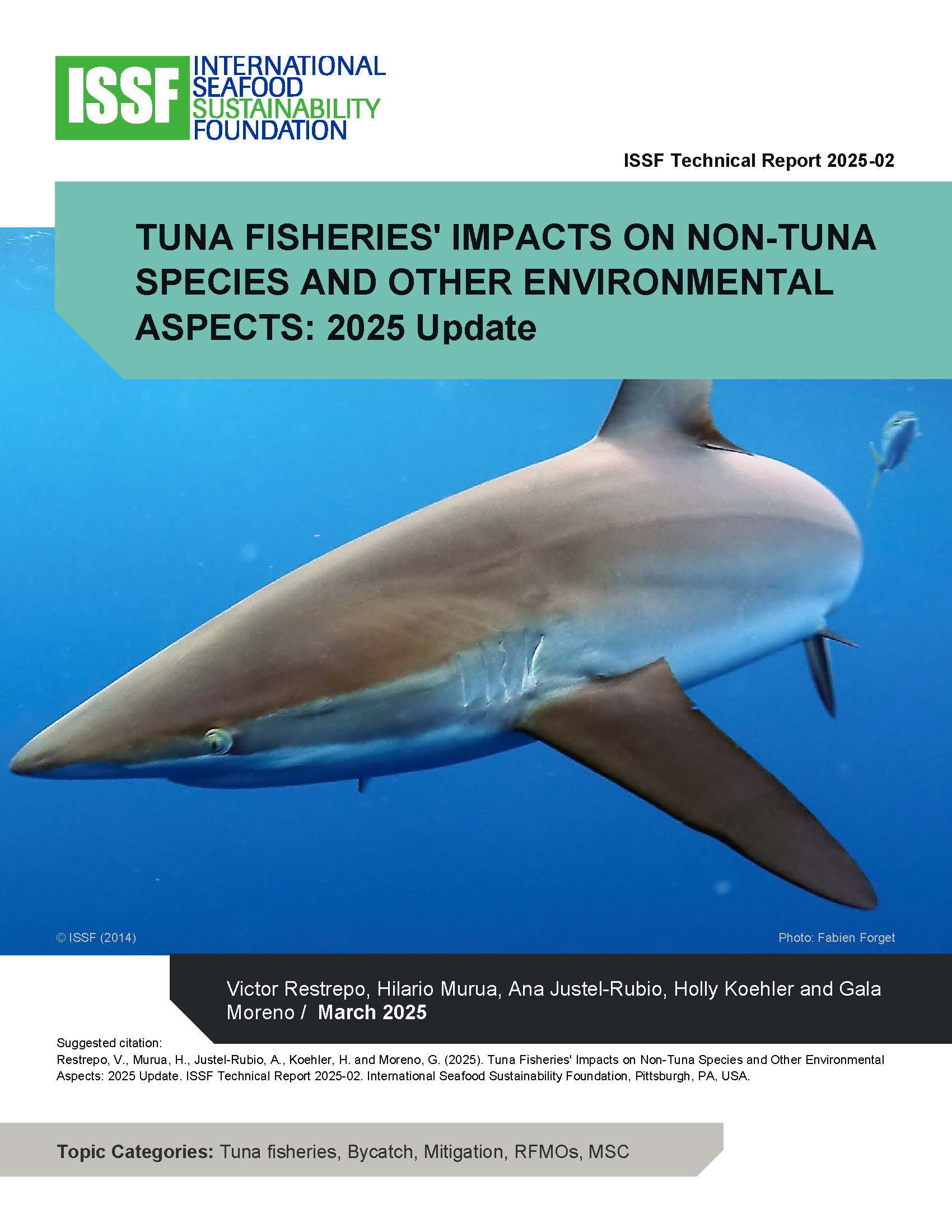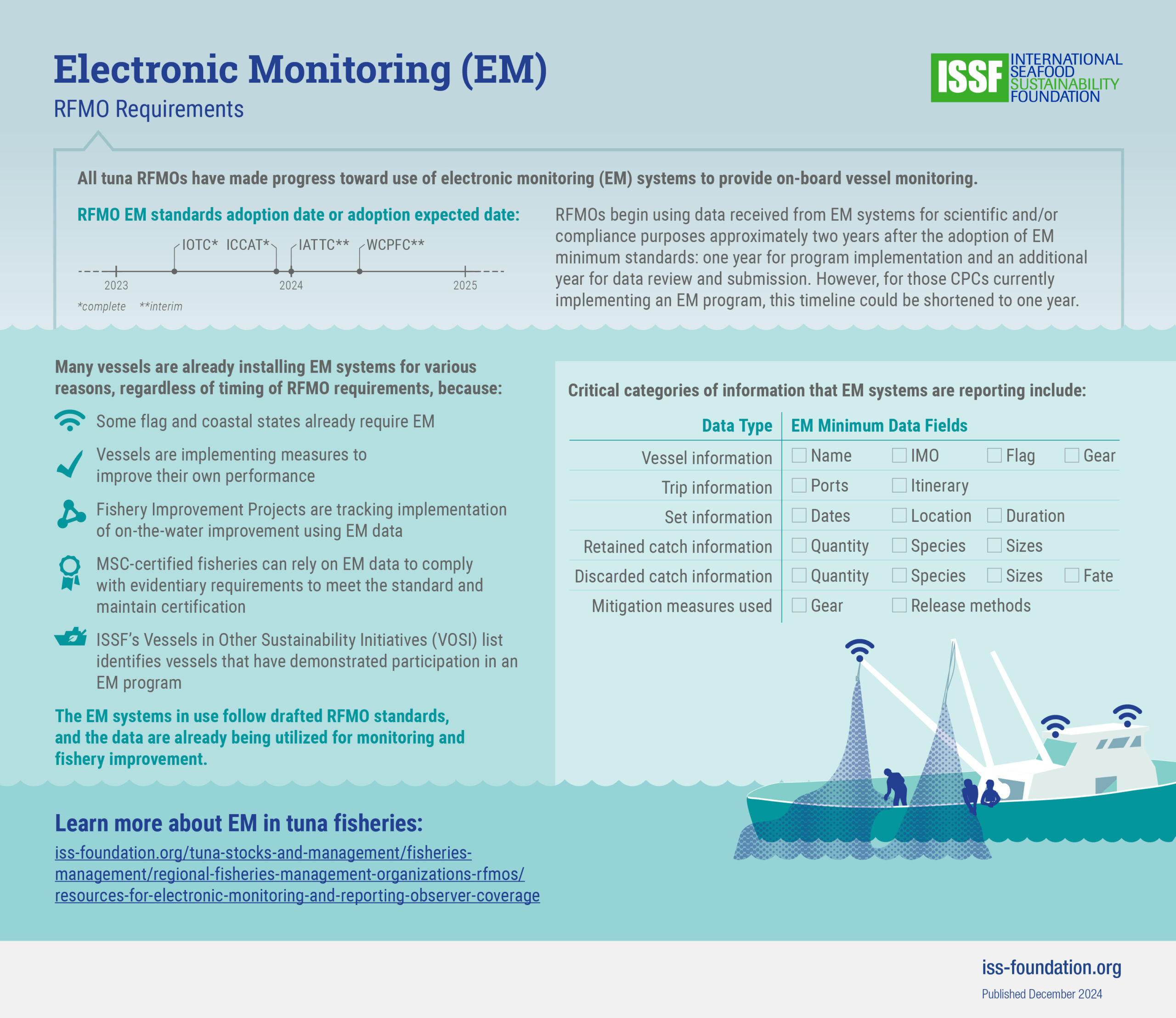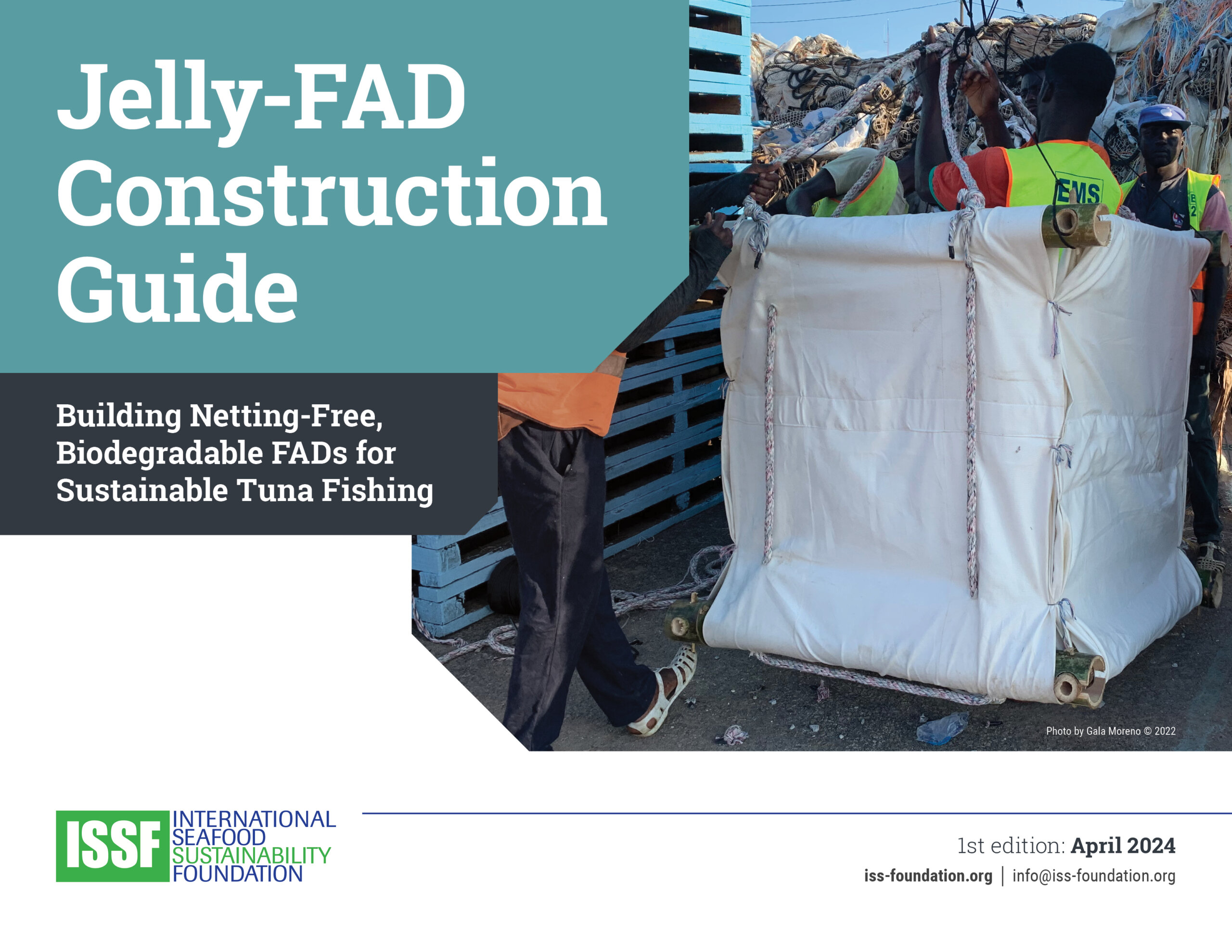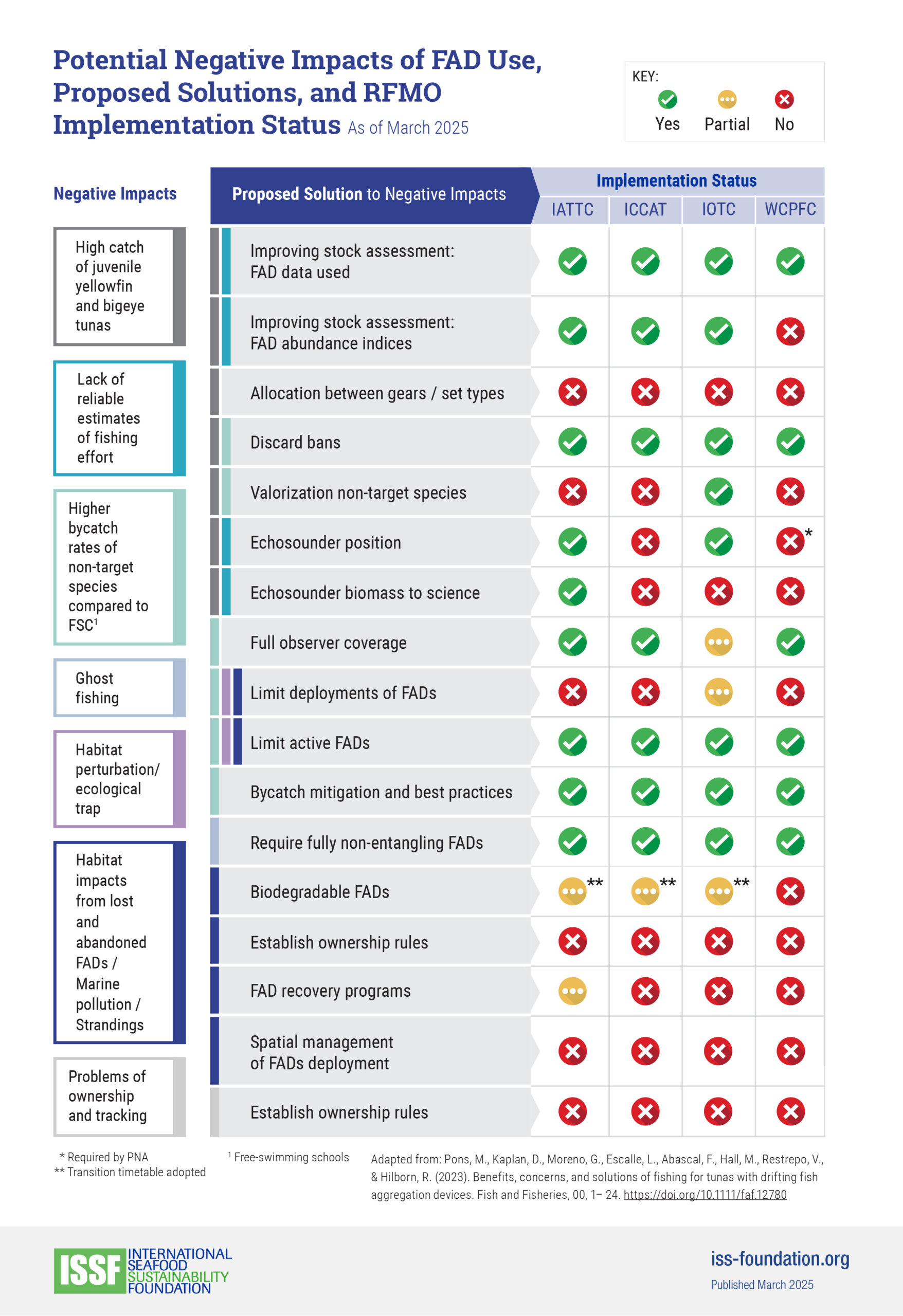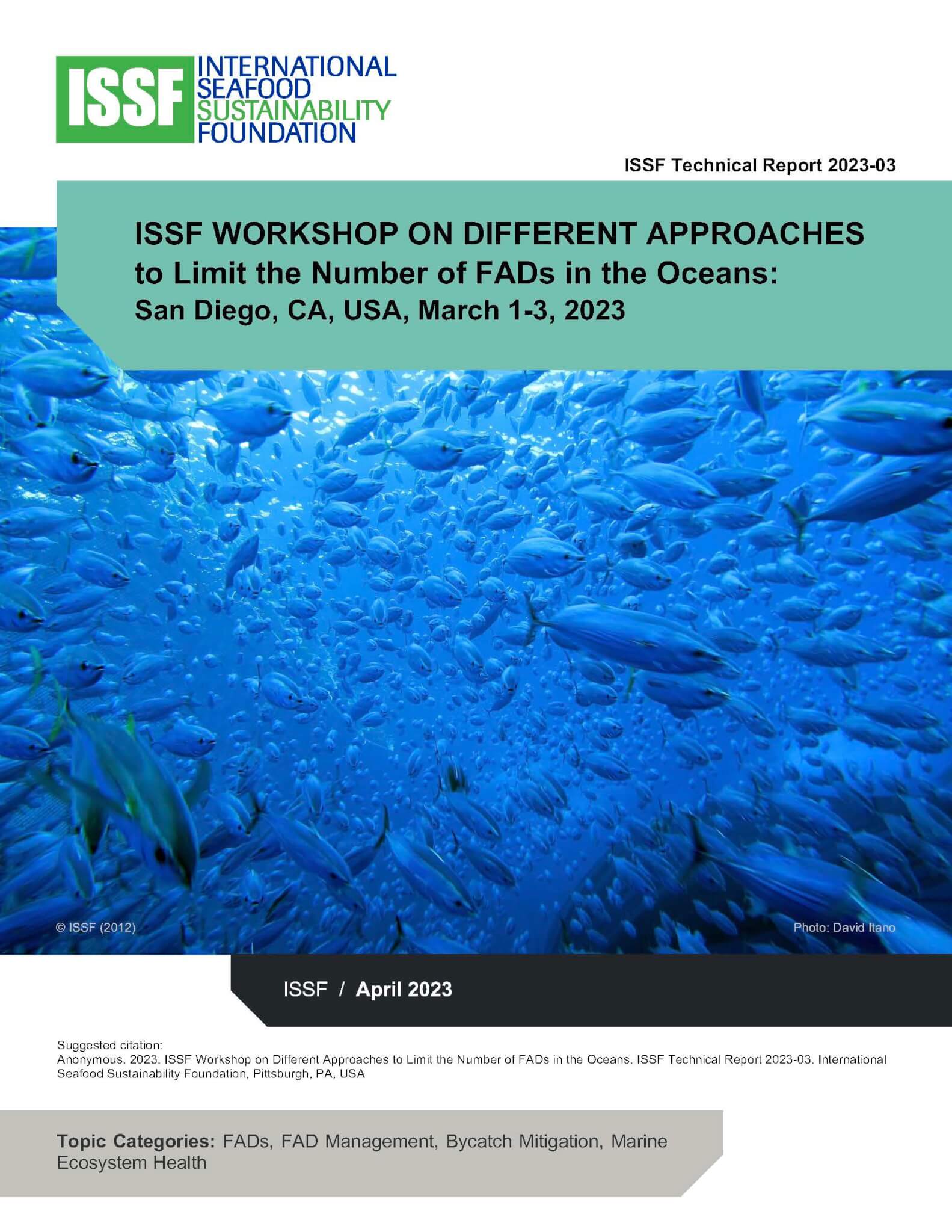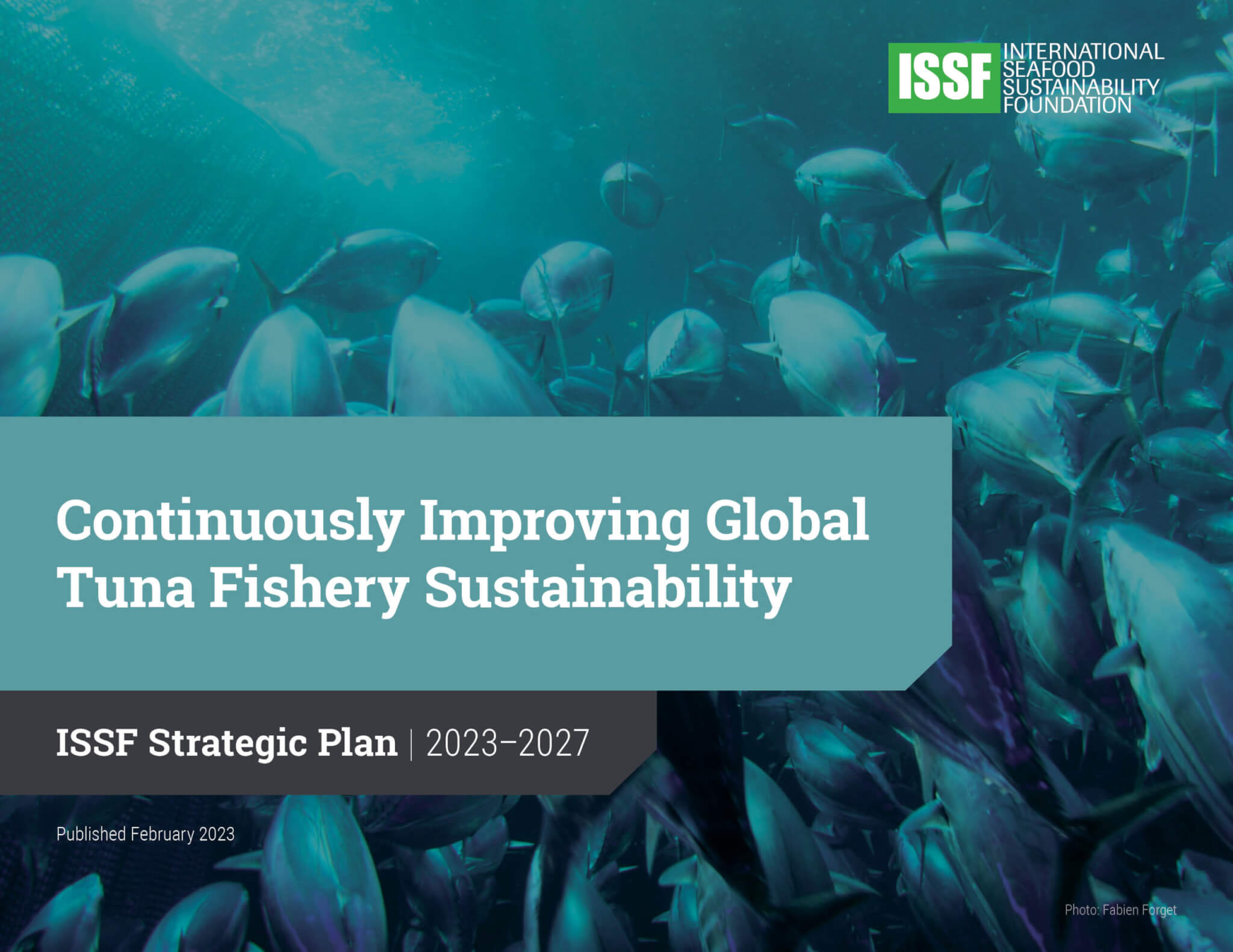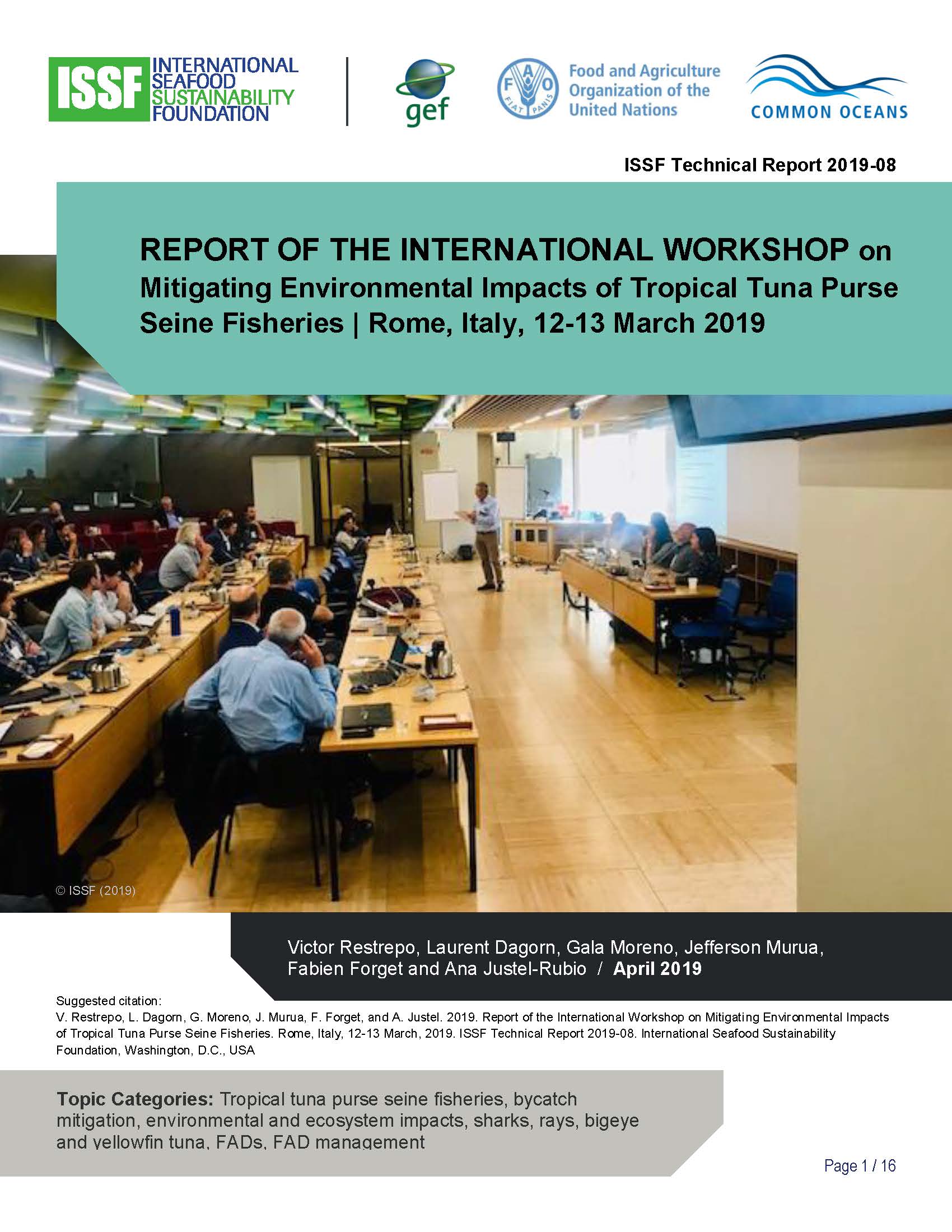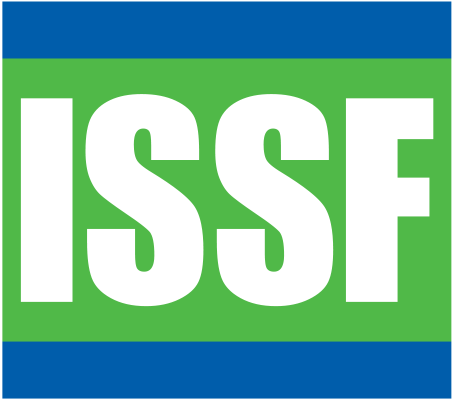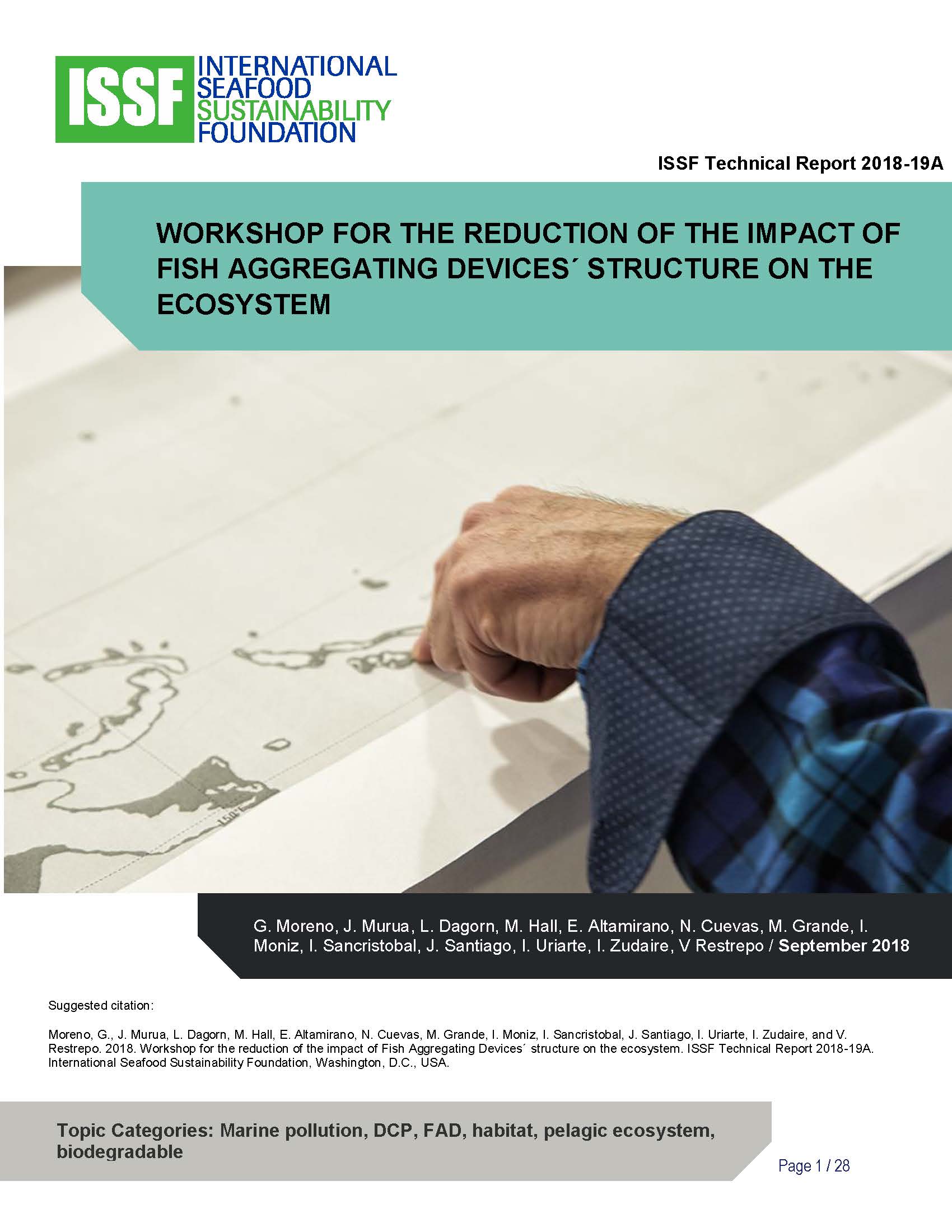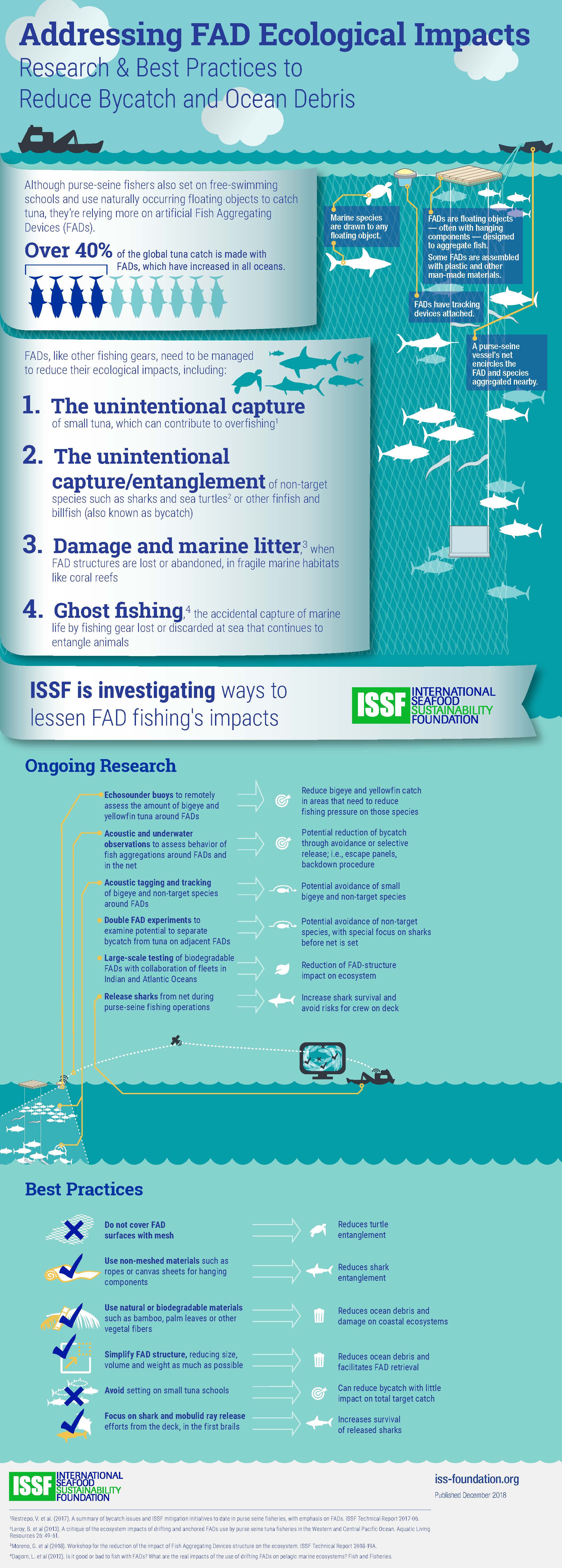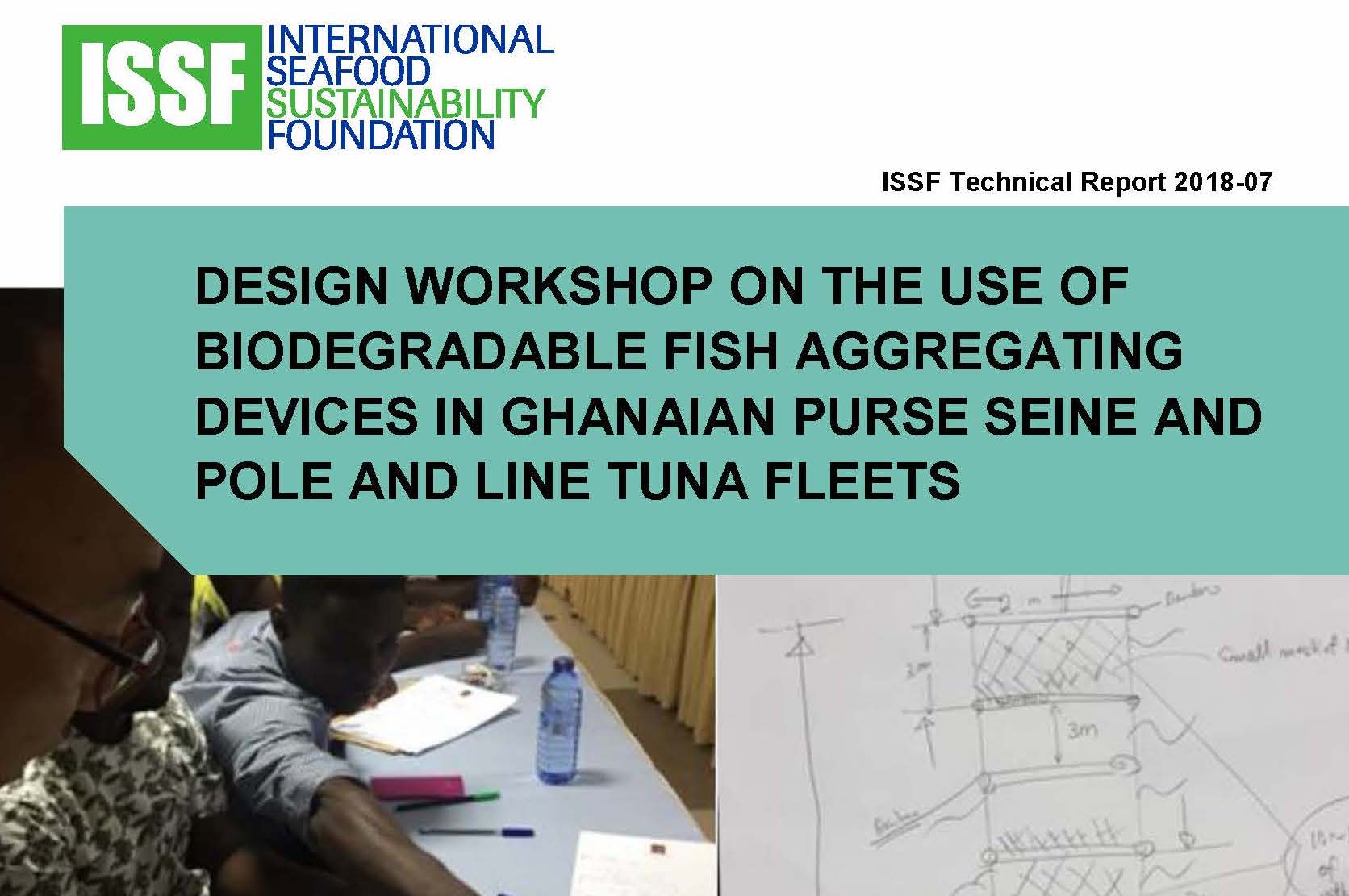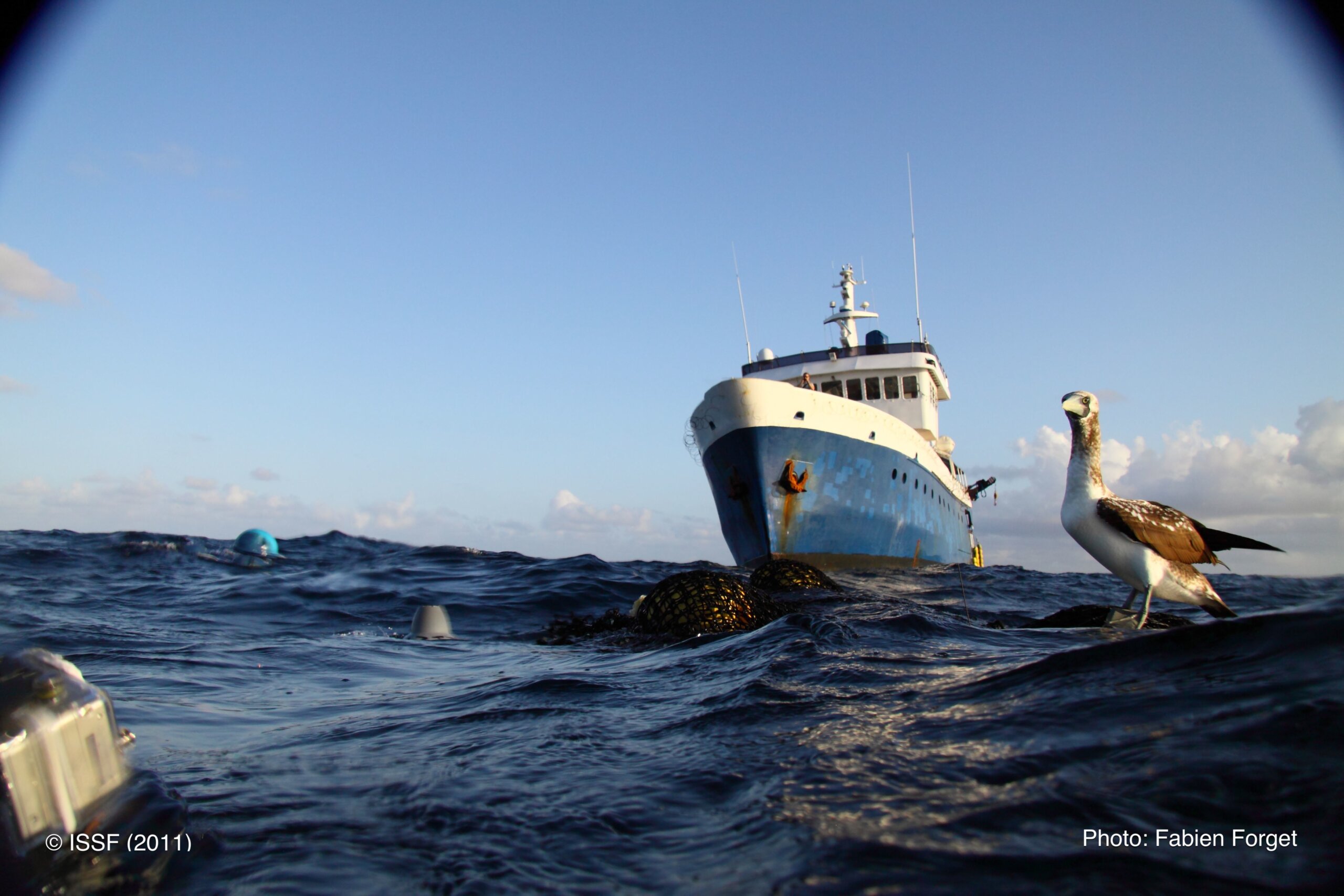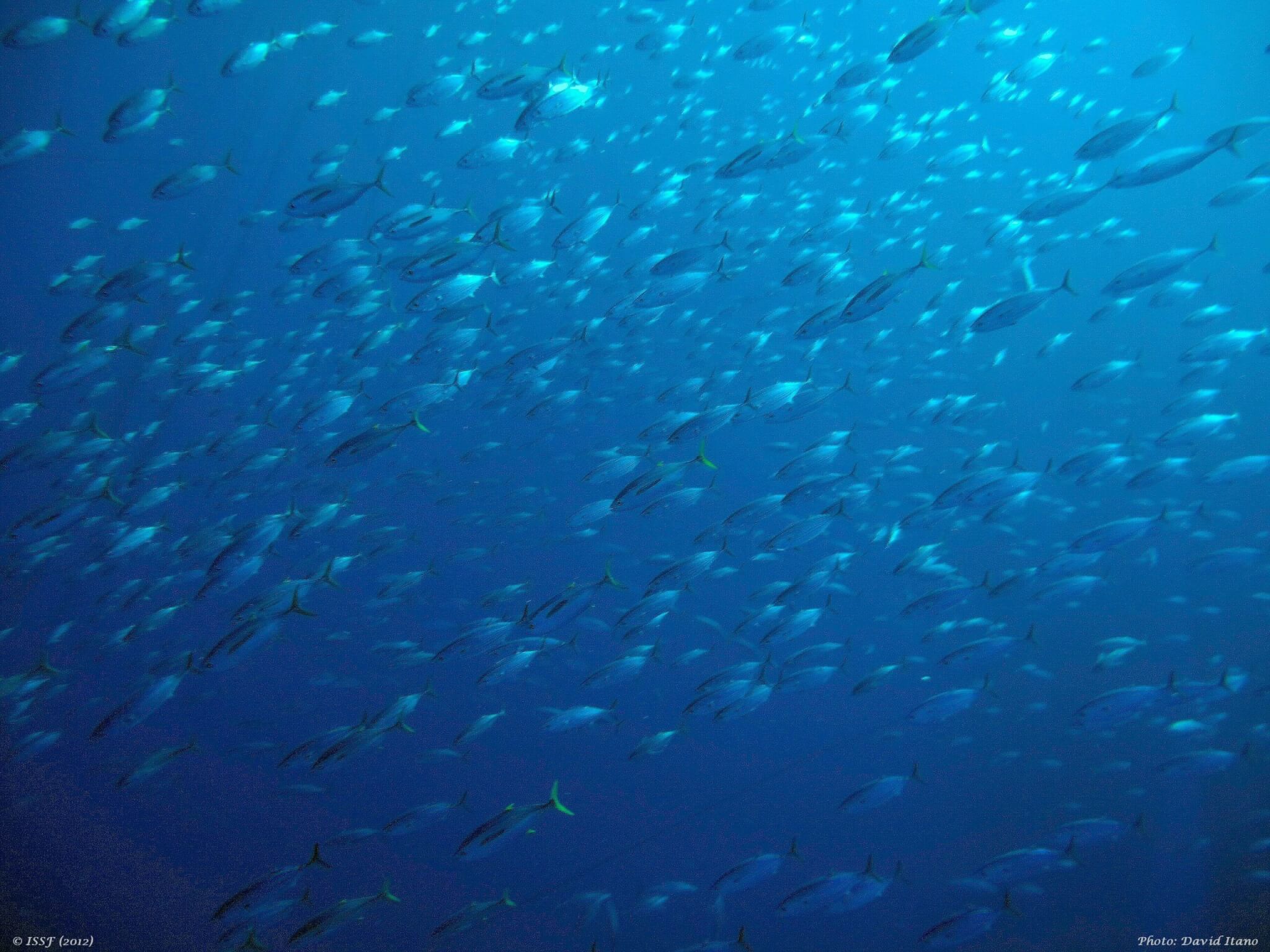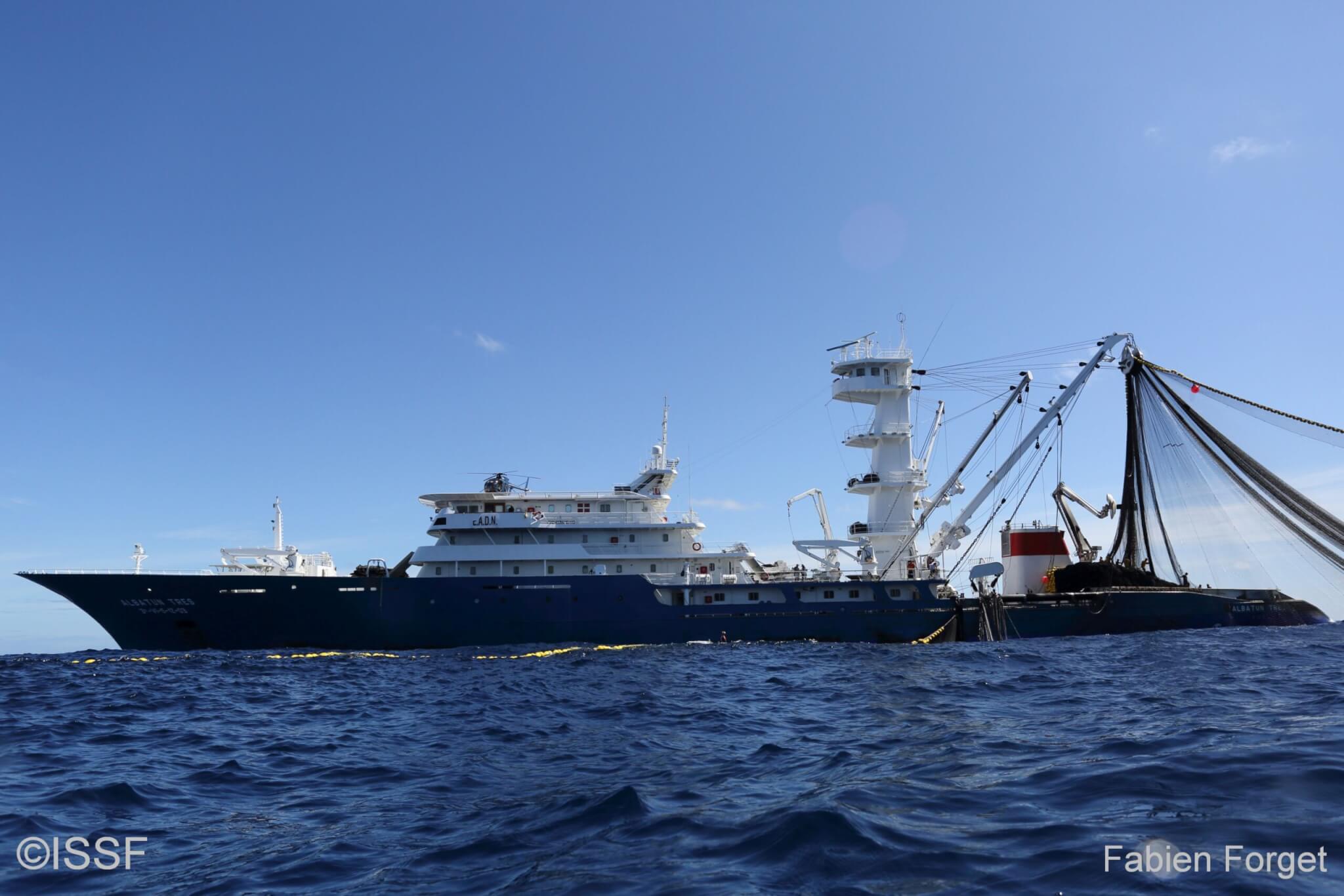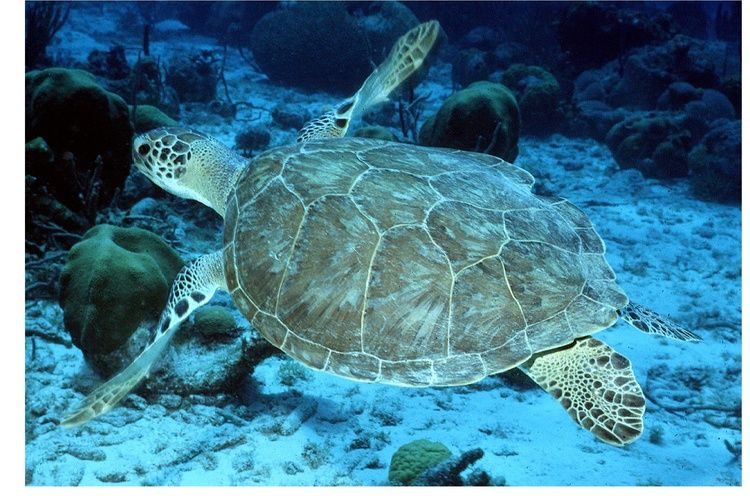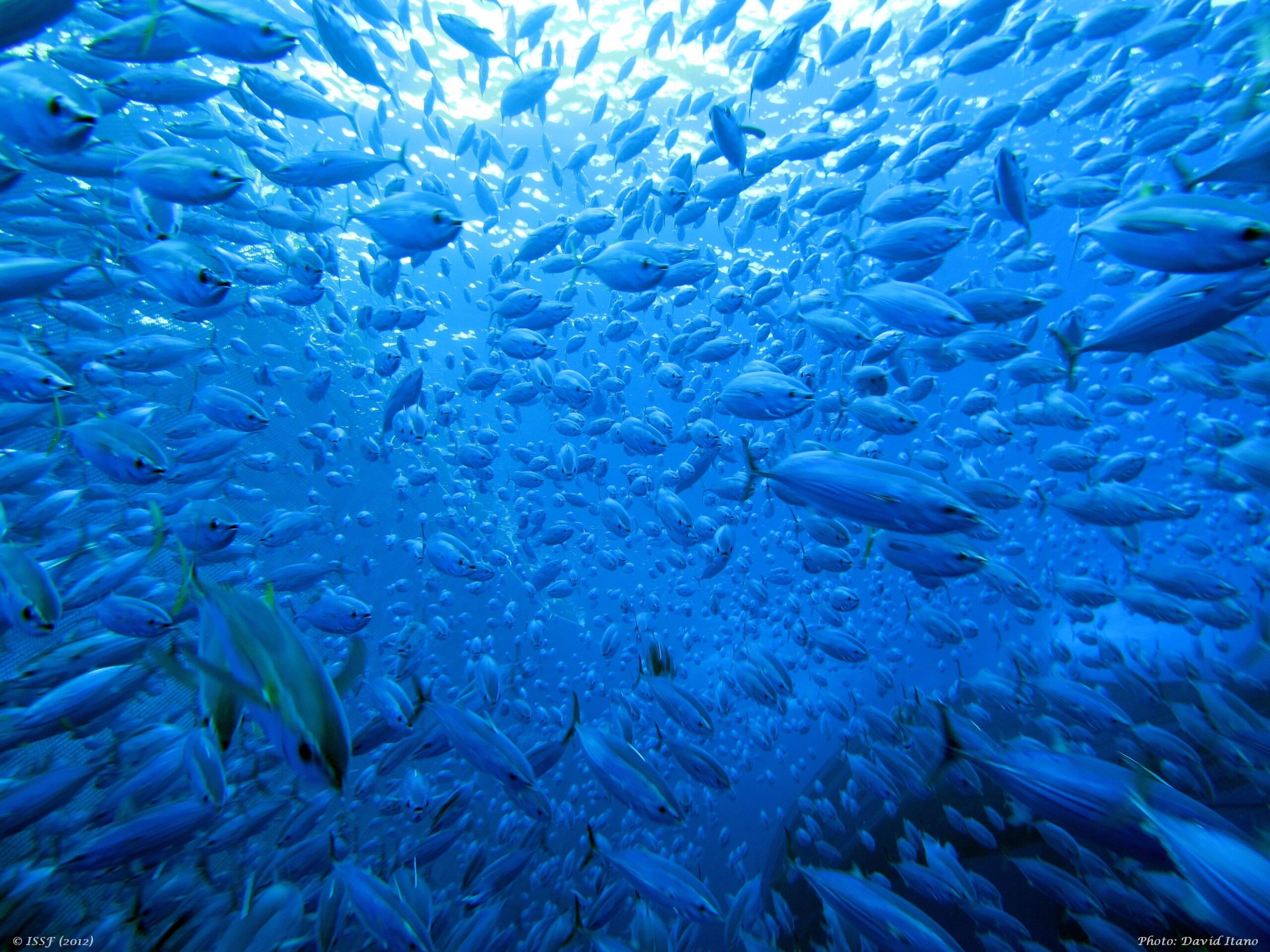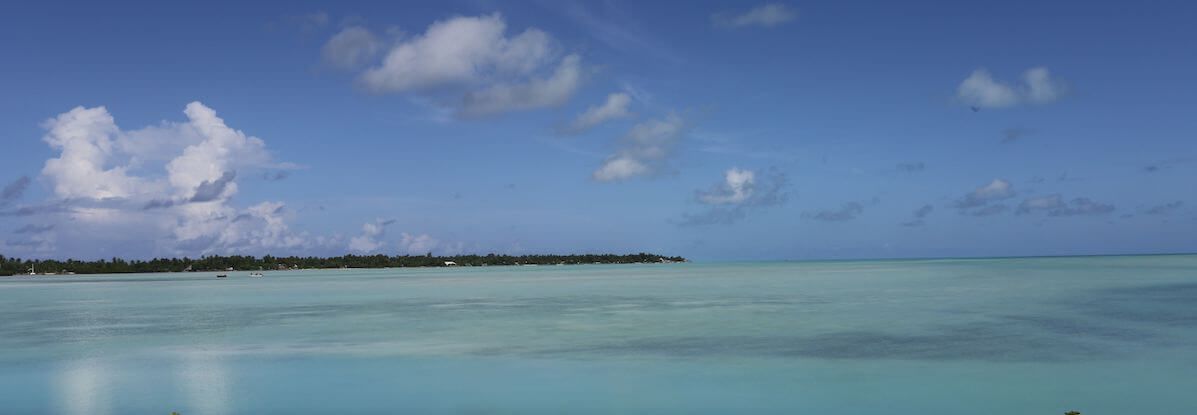
Marine Ecosystem Health
Our scientists are exploring how fish aggregating devices (FADs) can be better designed, built, and recovered from the oceans to protect marine environments — from pelagic waters to coastal areas.
Through workshops and at-sea research, we work with vessels, environmental organizations, fisheries managers, and other partners — including the FAO GEF Common Oceans Tuna Project — to find ways to reduce FAD fishing’s impact on the ocean ecosystem.
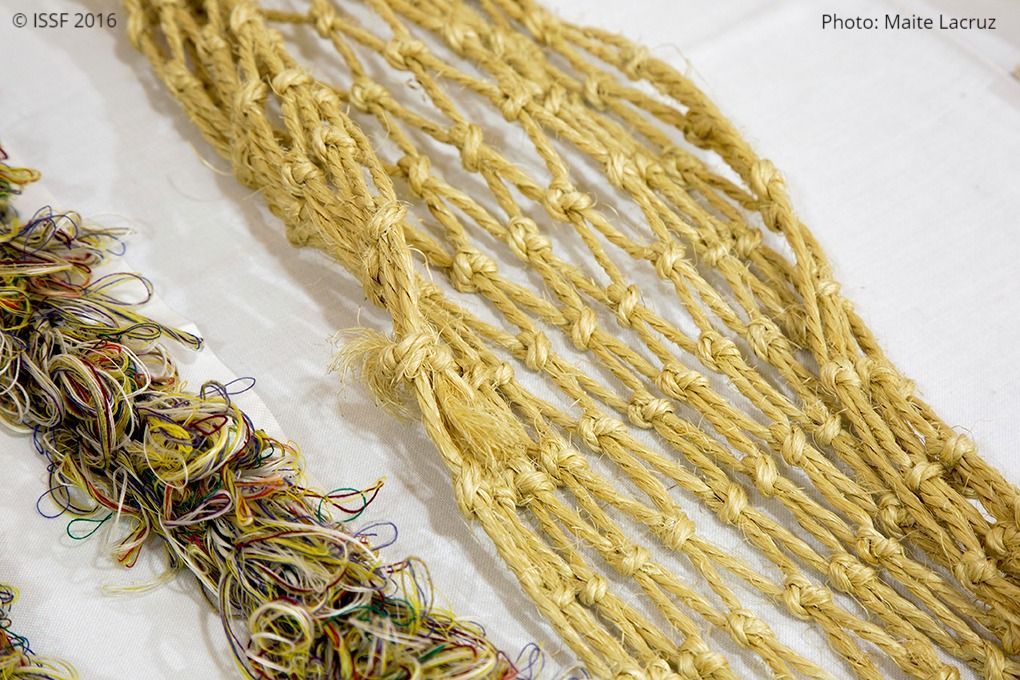
Biodegradable FADs
We work with fishers to design and test non-entangling fish aggregating devices (FADs) — including jelly-FADs — made with natural materials, which are less harmful to the marine environment.
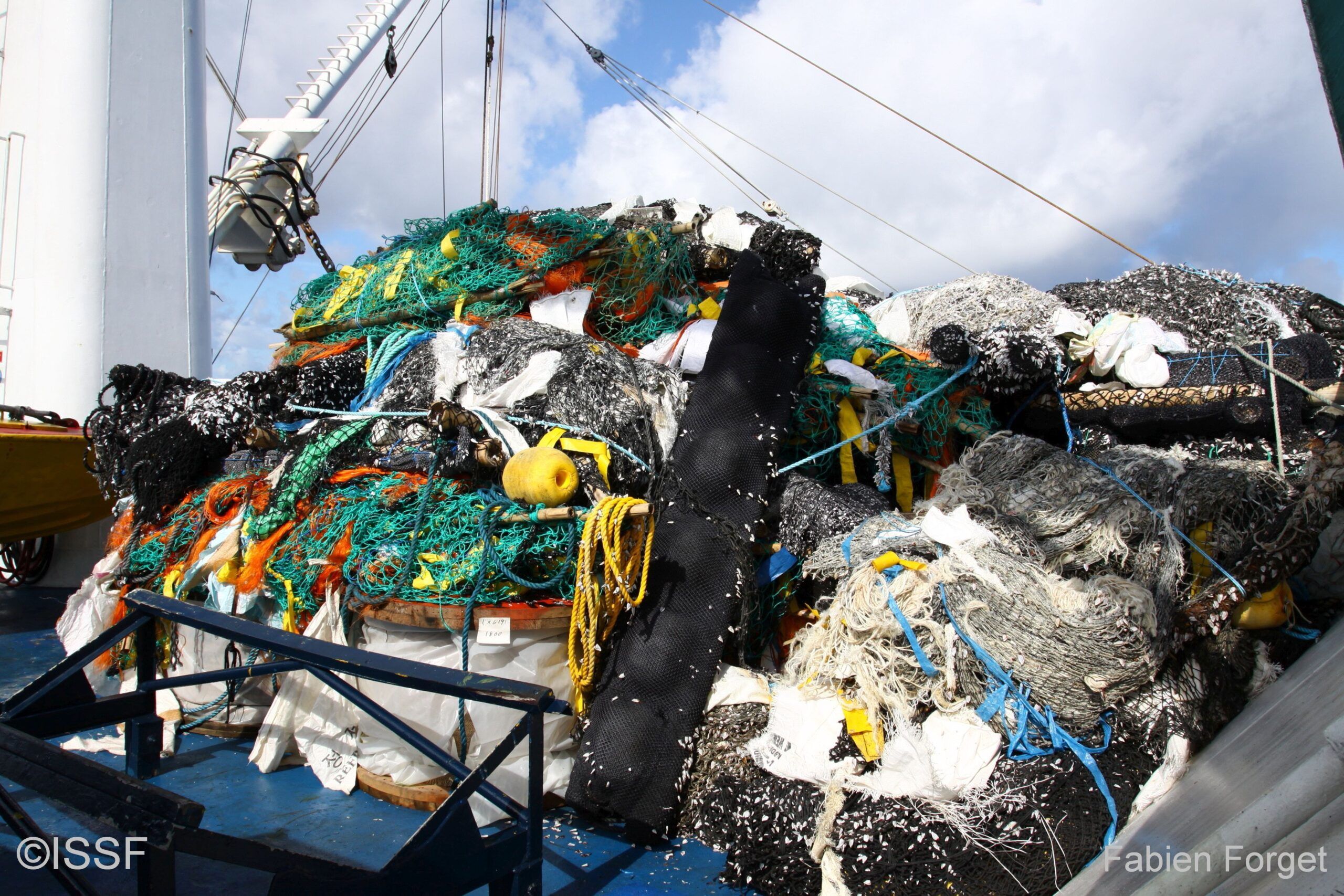
Marine Pollution Prevention
In collaboration with tuna skippers, ISSF identifies best practices for building, deploying, tracking, and recovering FADs to prevent marine debris and ghost fishing.
Award-Winning Innovation
ISSF’s biodegradable and non-entangling jelly-FAD design received the Global Seafood Alliance’s 2025 Responsible Seafood Innovation Award in the Fisheries category.
Fishing Gear Recovery
When FADs are not recovered when fishing operations end, they can persist in the ocean for years as marine debris — and damage vulnerable habitats such as coral reefs.
FADs made with plastics or other man-made materials can remain in the ocean and break down into smaller micro-particles — and then enter the food web.
OUR CONTRIBUTIONS
Problem-Solving Workshops
In workshops around the world, ISSF scientists meet with fishers, fishery improvement project (FIP) coordinators, and other sustainable-fishing stakeholders to discuss how to minimize tuna fishing’s impact on marine environments.
In those workshops, fishers have shared their experiences and ideas on sustainable FAD structures and better FAD management — designing prototypes of biodegradable FADs that can meet their catch needs, and proposing FAD deployment and tracking protocols.
In 2024, we co-hosted an international workshop in Galapagos, Ecuador, on FAD retrieval.
Lower-Impact FAD Designs
With input from tuna skippers, ISSF scientists are investigating how to design and build FADs that can meet fisher needs while having the lowest possible impact on the ocean ecosystem.
The jelly-FAD, which we believe is the most sustainable FAD design to date, has no netting and uses nearly 100% biodegradable materials. Its simpler FAD structure and reduced size, volume, and weight also are important for minimizing ecosystem impacts.
At-Sea Research
To evaluate new FAD designs’ efficacy and durability for fishers, we are testing promising biodegradable materials and lower-environmental-impact structures under both controlled and real fishing conditions.
Since fisher needs vary by gear type and location, ISSF scientific trials of bio-FADs — in partnership with fleets and other organizations — are underway in several oceans, including the Western and Central Pacific, the largest tuna fishing region.
Our scientists also publish peer-reviewed articles in leading journals on biodegradable FADs and many other topics.
FAD Management Best Practices
To protect the health of the marine ecosystem, vessels must track the FADs they deploy and avoid discarding FADs and other fishing gear in the ocean. Lost or abandoned FADs create marine pollution and can lead to ghost fishing — including of sharks and sea turtles.
ISSF publishes original research on a range of FAD and marine ecosystem topics. To inform fishing requirements for fleets, we also advocate to RFMOs best practices in FAD management — from electronic monitoring and data collection to recovery procedures — and assess RFMO measures for fleets.
RELATED RESOURCES
Jelly-FAD Construction Guide
We created an illustrated guide that gives tuna fishers step-by-step instructions for building jelly-FADs — a new model for non-entangling, biodegradable FADs.
Peer-Reviewed Articles
See a list of peer-reviewed articles co-authored by our staff, Scientific Advisory Committee members, or other scientists whose projects were partially or fully funded by ISSF.
Biodegradable FAD Workshop Videos
Learn about our bio-FAD workshops with fishers and scientists in Ghana, Senegal, the Federated States of Micronesia, the Philippines, and Papua New Guinea.
RELATED NEWS
